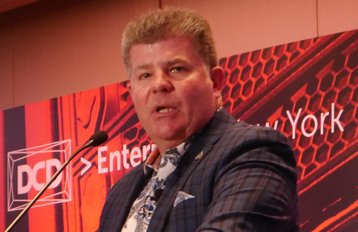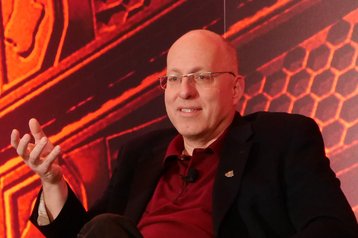Data centers are creating new energy possibilities, including bringing new renewable supplies on stream, and radically changing the way power is consumed, according to infrastructure executives from Google and Microsoft.
Consumers in Taiwan can now buy renewable energy thanks to negotiations by Google, Joe Kava, head of data center operations at Google told the DCD Enterprise show in New York today. In the same keynote session, Christian Belady, manager of data center services at Microsoft described how experiments in building fuel cell power into racks are pointing to radically simplified and less wasteful power distribution.
Power shift
”We are the word’s largest corporate buyer of renewable energy, ever,” said Kava. Google bought 5.7TWh of power in one year (2015), about as much energy as consumed by the city of San Francisco.
Google buys enough renewable power to offset all the energy it uses in its entire operation, and retires the renewable energy credits, so they are not counted twice.
Both Kava and Belady emphasized good carbon accounting: ”Most companies don’t retire the renewable energy credits, ” said Belady, ”We as industry leaders should abide by this. That’s a key point.”
These deals boost the availability of renewable power, and change things for other people, said Kava: “It wasn’t possible to buy renewable power in Taiwan, but thanks to our policy team and the local government, new energy regulation, was passed to allow consumers to buy renewable energy. This doesn’t only help Google, it helps everyone.”
Fuel-cell powered rack
Christian Belady detailed ways in which Microsoft is changing power consumption on the grid. Thanks to a deal with the local utility, Microsoft’s Cheyenne data center is sharing generators with the grid said Belady, but this is more than just demand reduction: “The generator is the utility’s asset, but located on our site. It makes the grid more stable for everyone.” The project uses a gas-powered generator, and it provides energy for local homes and businesses as well as Microsoft’s facility.
Belady also spoke of Microsoft’s ambitious plan to power data center using fuel cells within the racks. Although this is only a small scale pilot, Belady said it will be important as a test case showing what is possible. Data centers take grid power at hundreds of volts and transform it until it delivers 1V to a chip. The fuel cell-powered racks might not look viable today, but they are a test case tha tcould change the game, he said: “You could get rid of a whole lot of infrastructure.”
The two emphasized that webscale players remain committed to sustainable power infrastructure: “We want a 100 percent zero carbon grid for everyone,” said Kava. “There’s a lot more to do, but this is our ultimate goal.”


